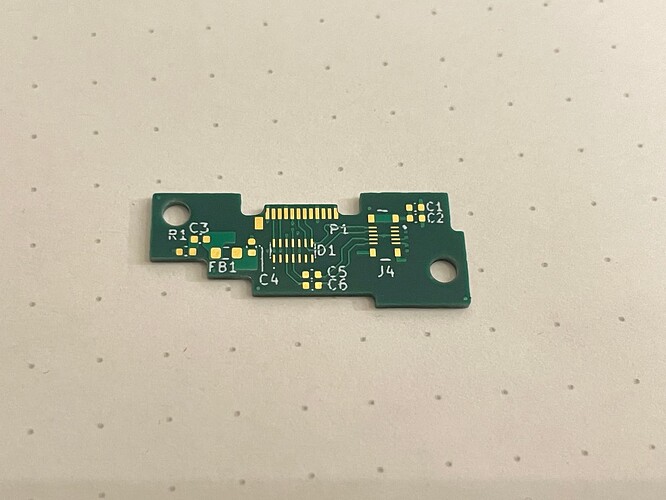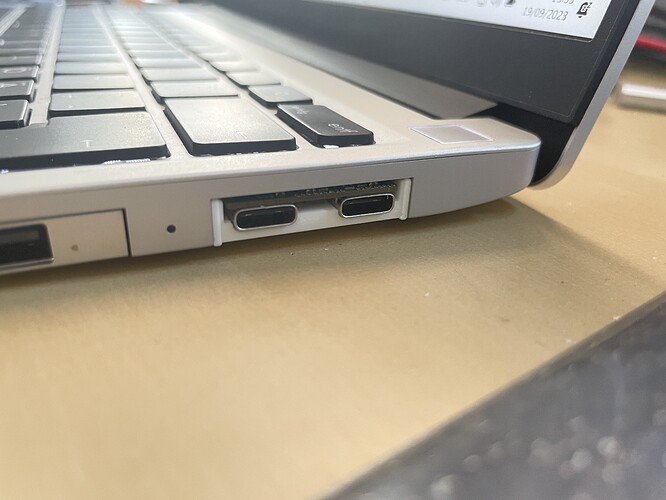In my situation, this would be a huge step up for me, I can connect more things to the laptop without as much worry.
With just 2 of these on the Framework 16, I can turn the 6 porter into a 4 fully porter + 4 USB 3.1 Gen 1. The 3.1 are perfect for a mouse and for external drives (I know framework has high storage modules but I already have the drives) for backups.
If it’s confusing what the ports support or not (display port etc.):
You could take advantage of the fact that they come as expansion cards and put a little text (maybe slightly indented) in the outer plastic, maybe even as part of the file for the 3D printer.
Well… ![]() … in the upcoming Framework 16 that would be six extra ports
… in the upcoming Framework 16 that would be six extra ports ![]()
@tbe have you contacted Framework about your design yet? I think they might be keen on either helping you make the board a reality or maybe outright buying the design and / or hiring you ![]()
Neither of these will likely happen, the most Framework has ever assisted anyone with expansion cards is funding which has been paused. Framework already knows about the design.
Re-reading your post, I just came up with a new idea…
I know this would be a whole new project, but if space is the issue, how about making a USB-C hub including PD-functionality, that offers expansion card slots additionally?
That way you should have more space than needed. ![]()
Looks like someone else already had a similar idea, at least concerning the hub:
What an impressive mental image. Is there any other laptop on the market with 12 USB 3.1 ports?!?
You are an actual deity
That would mean building a thunderbolt hub, which are very expensive, plus adding the expansion cards on top of that.
The much more economical solution is to use dedicated controllers on the PCB so you can simply add some plain USB-C ports plus a network port or an audio port or whatever you might need/want instead of going for general all-purpose ports.
Soooo, time for an update ![]() …
…
The new fixed daughter-boards arrived yesterday and I did assemble one tonight.
Optically not much of a difference:
I did adjust the silkscreen-text to my experiences so far ![]() :
:
The whole thing connected:
And we actually do now have a USB 3 device ![]() .
.
The two generic ones are the from the hub controller:
The USB 3 section of the controller:
The USB 2 part:
A quick AS-SSD benchmark:
The benchmark could be faster, but I used some Ali-express USB to NVME-adapter, so I actually don’t know what’s the limiting factor here.
Edit: That’s by the way a benchmark with the same SSD on the USB 3 5Gbit port on my Dell Thunderbolt dock:
So I’d say it’s a good result
I’m a little impressed (and proud ![]() ) it works at all!
) it works at all!
I did also test all ports (so the cable in both directions on both ports), and it works with USB 3 in all circumstances.
The next step will be designing an enclosure ![]() .
.
Absolutely amazing! Great work so far! The silkscreen update seems very understandable haha
Excellent progress!
Actually because of the way the ports are implemented there’s in theory some sketchy redneck-engineering way to have four ports on the expansion-card ![]() (with an adapter).
(with an adapter).
What a thing of beauty! Congratulations, good luck on the enclosure part. I’d like to buy one or two if you plan on selling them. ![]()
You did the “just put 2 usb2 ports per type-c port instead of a mux” thing?
Yes, mainly to avoid additional switching ICs and therefore more occupied PCB area (and BOM cost). Also the 4-port IC has the exact same size and footprint as the 2-port version and the 2 native C-ports is significantly larger. I can’t see any downside of implementing it that way. Also it’s an implementation mentioned in the application note for the hub IC.
You payed for 4 port and you will use 4 ports XD. Pretty sure the 2 port is just a cut down 4 port anyway.
Honestly I prefer this implementation over the official one, who is going to say not to an extra port, if framework used this method, making a dual port card would have been almost infinitely easier.
I guess that’s not an option if you have Thunderbolt capabilities since it uses both RX/TX channels. Also it would have some cavities when you plug a PD-device into one of the ports since you then suddenly have a higher voltage on the supply lines which you would have to manage then to not kill things that are on the other port.
Here’s some first prototype for an enclosure, it’s based on the reference provided by framework:
Height is pretty tight and would barely fit an metal sheet on top.
Inserted:
It’s most likely going to change and I have to figure out where to order such a cut and bent metal sheet without breaking the bank (on xometry probably?).
looks great. happy to see the project develop, and now with a first case, or the lower half of one.
fyi, i recall that some diy exoansion cards, such as some ‘dingle hider’ designs, never added a top cover, but left it open. they still seems to work and look fine, when plugged in, reportedly.
edit:although with this one if you watered to cover the front, thinking about that again, yeh, yiu may still want a too cover… but that could perhaos be 3d printed also. And with all the jntrest, someone else might be willing to do tha cover case design.
anyway, looks great, happy to see the two port project progress. ![]()
It’s a little flimsy without a cover to hold everything in place since it’s only held down by the two screws on the plug side (they aren’t installed here tho). But I’ll experiment with a fully printable version of a front bracket that holds it down. I’m preferring a cover on top since otherwise sensitive components are completely exposed.













